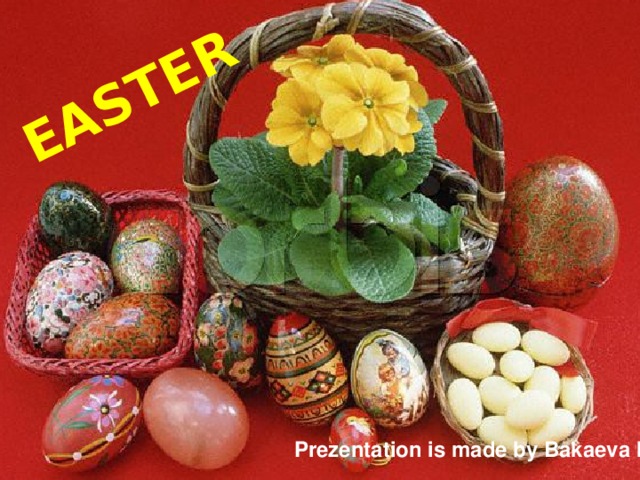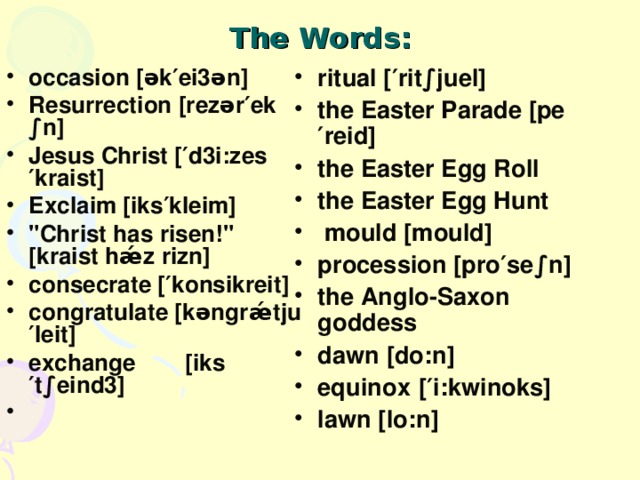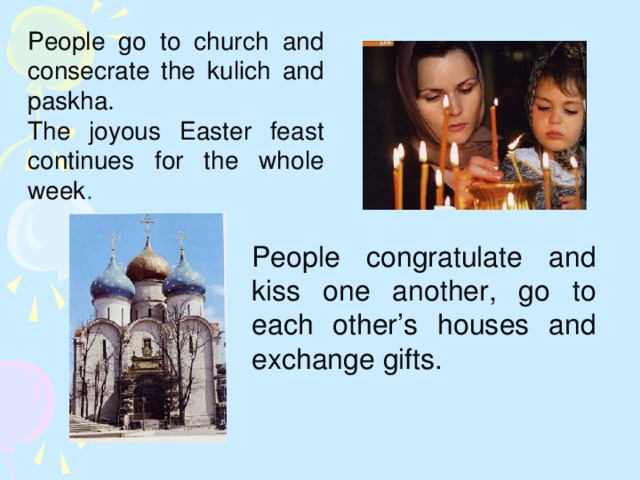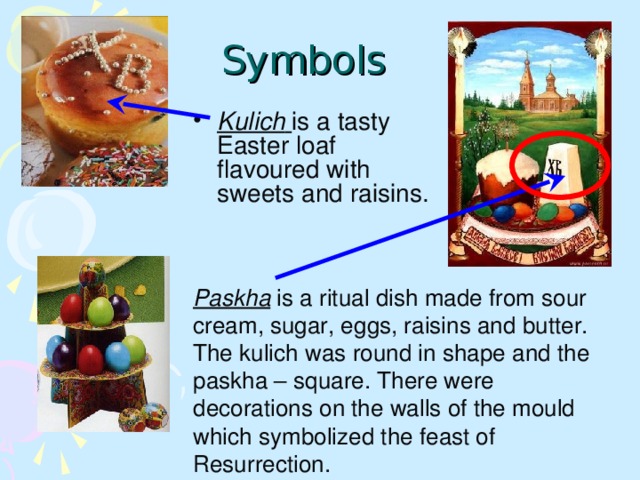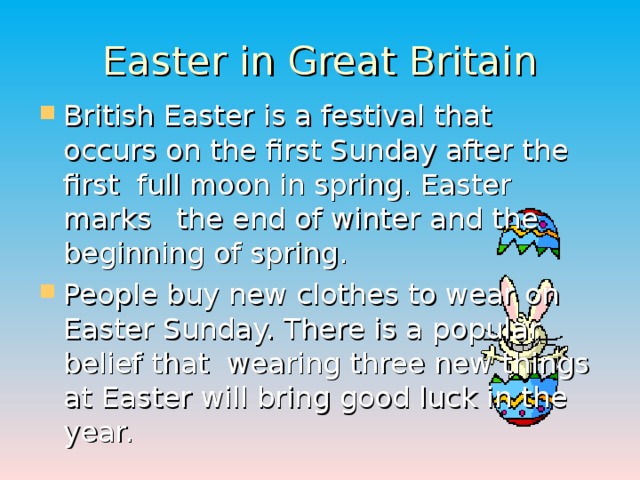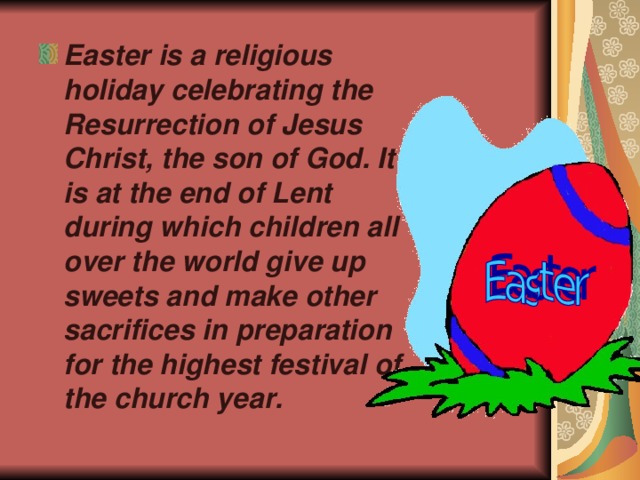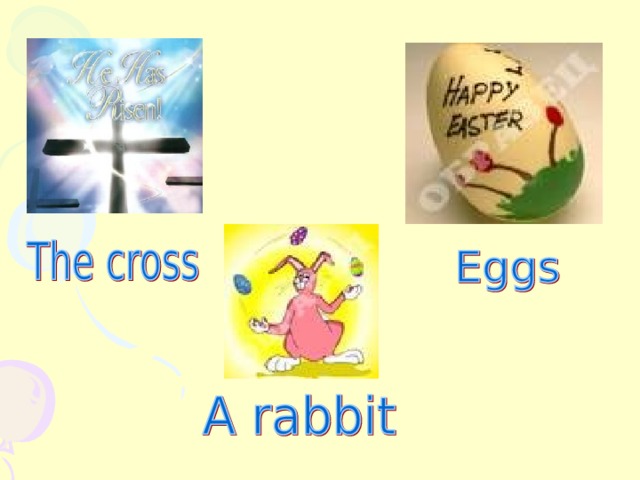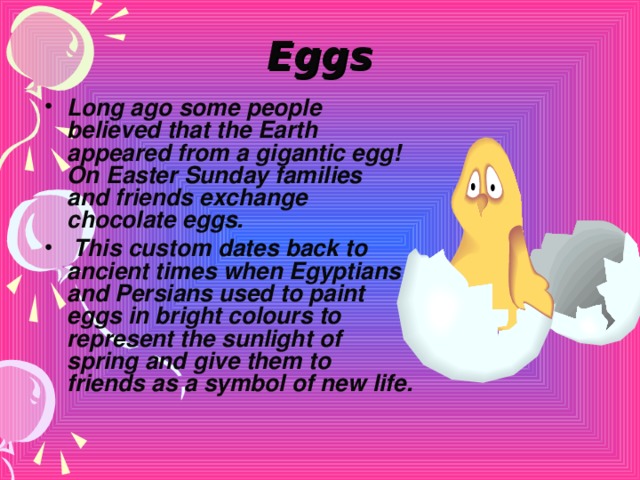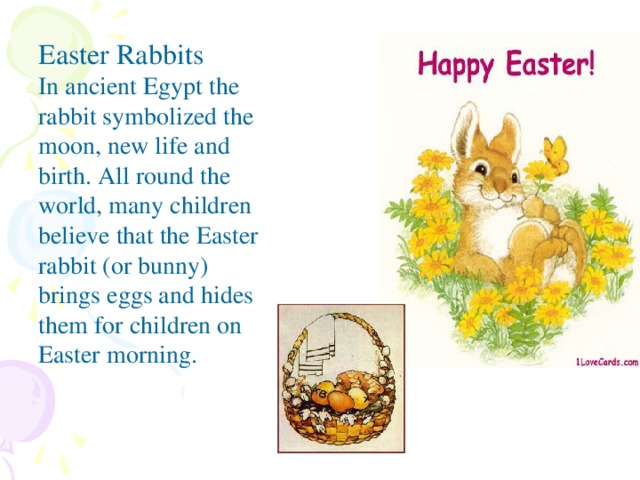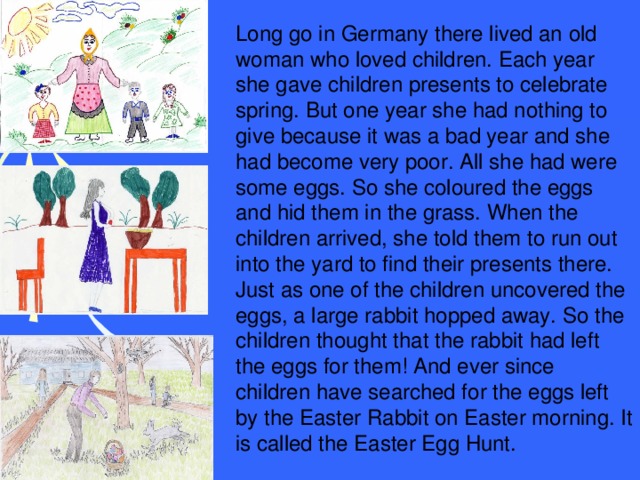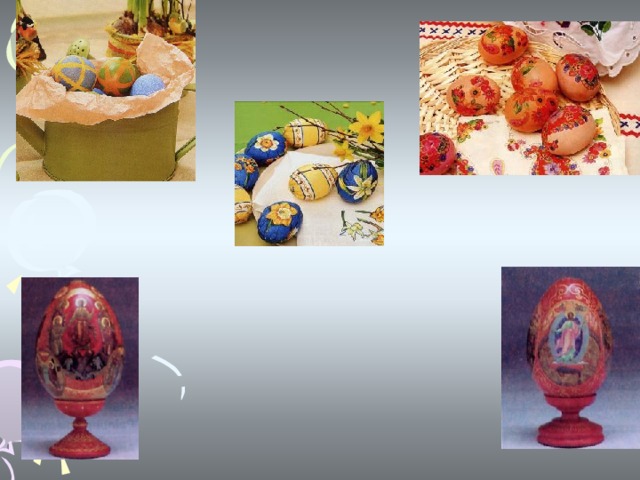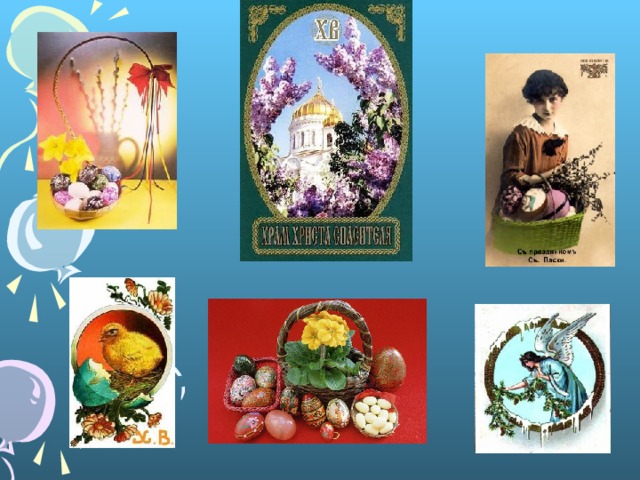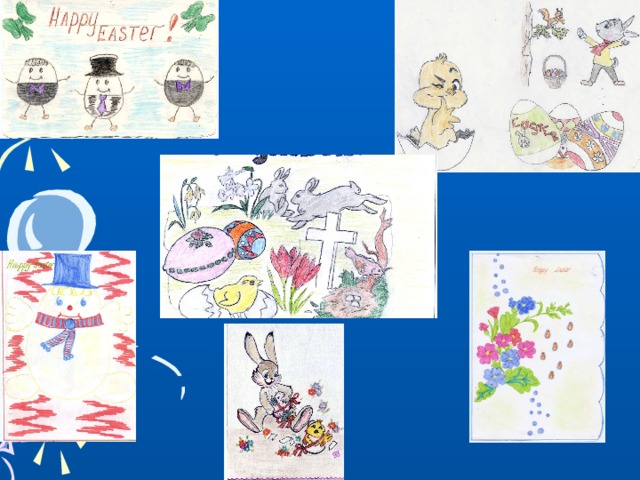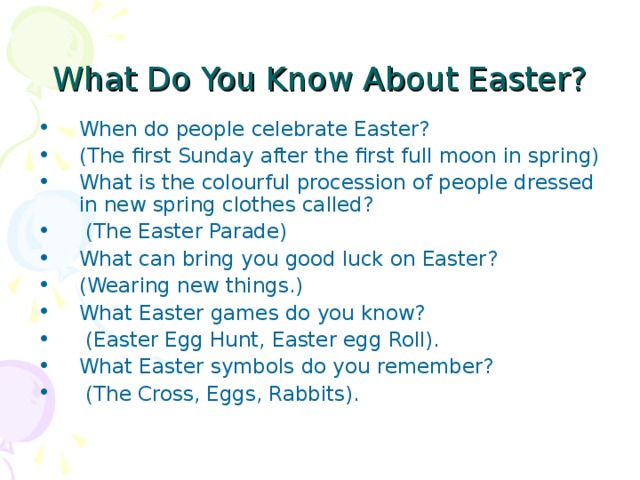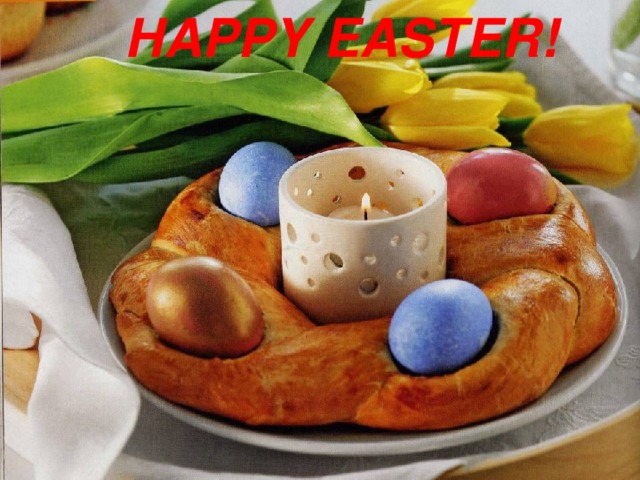«Волшебная Пасха»
урок английского языка в 6 классе
Языковой материал: лексика по теме «Пасха»:
occasion
the Resurrection of Jesus Christ
exclaim
"Christ has risen!"
Consecrate
congratulate
exchange
ritual
the Easter Parade
the Easter Egg Roll
the Easter Egg Hunt
mould
procession
the Anglo-Saxon goddess
dawn
equinox
lawn
Easter in Russia is celebrated on the first Sunday after the first spring new moon. It usually fell in April. People celebrate the Resurrection of Jesus Christ.
On meeting each other people exclaim: "Christ has risen!"
People go to church and consecrate the kulich and paskha.
The joyous Easter feast continues for a whole week
People congratulate and kiss one another, go to each other houses and exchange gifts.
Kulich is a tasty Easter loaf flavoured with sweets and raisins
Paskha is a ritual dish made from sour cream, sugar, eggs, raisins and butter. The kulich was round in shape and the paskha – square. There were decorations on the walls of the mould which symbolized the feast of Resurrection.
The word “Easter“comes from the Anglo-Saxon goddess of the dawn whose spring festival was celebrated in April. Before the arrival of Christianity, people believed that the sun died in winter and was born again in spring, on the day of the spring equinox they would sing and dance as the sun rose in the sky.
Easter in GB. (4-5 slides)
They are:
The Cross. It has a special meaning to Christians. It represents Christ’s victory over death. It is a significant Easter symbol.
Eggs. Long ago some people believed that the Earth appeared from a gigantic egg! On Easter Sunday families and friends exchange chocolate eggs. This custom dates back to ancient times when Egyptians and Persians used to paint eggs in bright colours to represent the sunlight of spring and give them to friends as a symbol of new life.
Easter Rabbits. It is true that in ancient Egypt the rabbit symbolized the moon, new life and birth. All round the world, many children believe that the Easter rabbit (or bunny) brings eggs and hides them for children on Easter morning. There are many different legends but here is a popular one.
Long go in Germany there lived an old woman who loved children. Each year she gave children presents to celebrate spring. But one year she had nothing to give because it was a bad year and she had become very poor. All she had were some eggs. So she coloured the eggs and hid them in the grass. When the children arrived, she told them to run out into the yard to find their presents there. Just as one of the children uncovered the eggs, a large rabbit hopped away. So the children thought that the rabbit had left the eggs for them! And ever since children have searched for the eggs left by the Easter Rabbit on Easter morning. It is called the Easter Egg Hunt.
The Easter Egg Roll
Eggs are an important part of Easter sports. One of the traditional Easter egg games is the Easter Egg Roll.
Perhaps the most famous egg rolling takes place on the White House Lawn in Washington. Hundreds of children come with baskets filed with brightly decorated eggs and roll them hopping the president of the United States of America is watching the fun.
The rules of the Easter egg Roll are to see who can roll an egg the greatest distance down a grassy hillside without breaking it. We haven’t got a grassy lawn but there is a “hillside” here. (Children are playing)
People eat hot cross buns on Good Friday, it’s the day before Easter Sunday. There is a white cross on a bun. And there is another legend about the buns.
Narrator: Once, long ago in England, there lived a monk.
Monk: I go round my town, along the streets and see many poor families living together in tents. Easter is in two days and on that great holiday families shouldn’t go hungry. What should I do for them? A baker’s shop… Oh! I know! I’ll bake a great many spiced buns with raisins inside! I’ll decorate them with a cross and give them to the poor families.
Narrator: And so he did. Then he saw a little boy nearby.
Monk: What’s your name, little boy?
Boy: Giles.
Monk: Do you want my buns, Giles?
Boy: No, I don’t, thank you. I don’t want charity. Could you bake me a basket of buns that I can sell?
Narrator: The boy was in ragged clothes and had a dirty face. The monk felt sorry for him. But the boy had pride.
Monk: All right, I’ll bake the basket of the buns.
Narrator: The Easter morning Giles took his basket from house to house, singing out in a voice that carried over the clear air.
Hot Cross Buns
Hot Cross Buns
One a penny
Two a penny,
Hot Cross Buns.
Narrator:
Before mass that morning, Giles had sold all the buns. He put the money he had earned in the poor box at church. To this day, children all over the world sing this sing.
The song “Hot Cross Buns” (All are singing and giving eggs and cards to the guests)
Happy Easter!
8. Our lesson is coming to an end. Let’s see who was the most attentive?
- When do people celebrate Easter? (The first Sunday after the first full moon in spring)
- What is the colourful procession of people dressed in new spring clothes called? (The Easter Parade)
- What can bring you good luck on Easter? (Wearing new things.)
- What Easter games do you know? (Easter Egg Hunt, Easter egg Roll, Pancake Catching).
- What Easter symbols do you remember? (The Cross, eggs, rabbits)0
- What kind of holiday is Easter? (Christian, religious)
